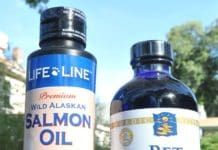New Guides In Town
When buying food for their dogs, owners depend on the product manufacturers to deliver a “complete and balanced” diet in those bags, cans, and frozen packages. Perhaps without even being aware of it, owners also understand that there are government agencies responsible for setting standards as to what constitutes a “complete and balanced diet” for dogs, and for making sure that pet food makers meet those standards.
Dietary Fats in Dog Food
As soon as a food is manufactured, it begins to undergo a variety of chemical and physical changes. It's a basic law of the universe (the second law of thermodynamics) that everything degrades over time. This includes the proteins and vitamins in dog foods, but it's the fats I worry about the most.
Celebrate with These Thanksgiving Recipes for Dogs!
Thanksgiving is a time when families gather together to enjoy good food and to remember all the things we have to be grateful for. Unfortunately, one part of our family often gets left out our dogs! It must be frustrating for them to smell all the wonderful aromas coming from the kitchen, but not be able to share in the feast. We're here to relieve that vexing situation with recipes for some healthy Thanksgiving dishes just for them.
Corn-Containing Dog Food at Increased Risk of Aflotoxin
Fungus is more than a nuisance when it comes to corn; it can be deadly to dogs (and humans). Actually, it’s not fungus itself that’s a problem; the peril is a secondary chemical product created by the metabolic process of certain fungal species, in particular, Aspergillus flavus and Aspergillus parasiticus. Aflatoxin, the chemical produced by these fungi is not just toxic, it’s one of the most carcinogenic substances known to science.
How to Select Top Quality Canned Dog Foods: You Have to Read the Labels!
If you're currently feeding your dog a canned dog food diet or are thinking about starting, great! As always, the best thing for you to do is read the label. Skip over the pretty pictures of steaks and vegetables on the front of the can and pay close attention to the ingredients listed on the back.
Focus your attention to these two places on the label: the ingredients panel, and the guaranteed analysis. These sections are required by law, and reveal the most about the can.
While the price of the food should never be considered the sole indicator of its quality, many times a higher price does in fact mean higher quality ingredients have been used.
Focus your attention to these two places on the label: the ingredients panel, and the guaranteed analysis. These sections are required by law, and reveal the most about the can.
While the price of the food should never be considered the sole indicator of its quality, many times a higher price does in fact mean higher quality ingredients have been used.
How To Improve Your Homemade Raw Dog Food Diet Recipes
Several raw feeders contacted me after reading my homemade diet guidelines (“You Can Make It”) in July’s Whole Dog Journal issue. While their diets varied considerably, each had problems that are common with raw diets – but most are easily fixed. For example, many raw diets are high in bone, which provides calcium and phosphorus. Excess calcium can lead to serious orthopedic conditions in large-breed puppies, especially before puberty. High-calcium diets are not dangerous for adult dogs, but calcium binds other minerals, including zinc and iron, so a diet high in bone may lead to other nutritional deficiencies. Too much bone can also cause constipation.
How to Make Your Own Top-Quality Dog Treats
Imagine not having to worry about treat recalls or ingredient sources, or, for that matter, whether the actual ingredients match what's on the product label. It's not a dream; in fact, it's well within anyone's abilities. It's easy, it costs less than commercial products, and as an added bonus, you get the peace of mind from knowing these treats won't be recalled. Heck, you have to go grocery shopping anyway, so it shouldn't be a problem to pick up the necessary ingredients while shopping for the other members of your family. Whether you shop at Safeway or Whole Foods, one thing is certain: the quality of the raw ingredients you’ll buy in human grocery stores is far higher than what is used in most commercial treats.
Jerky Treats (and others) Still Making Dogs Ill
rodenticides
The Benefits of Fish Oil to Your Dog’s Health
Fish oil is probably the most important supplement you can add to your dog's diet, regardless of what type of diet you feed. EPA and DHA, the omega-3 fatty acids in fish oil, provide widespread benefits, but they are fragile and unlikely to survive storage in bags of kibble, or may be rancid even before being added to pet foods. Krill oil and whole fish also provide EPA and DHA that may be better absorbed, providing similar benefits in smaller doses.
How to Make Homemade Dog Food
It's important that the home-prepared dog food diet you feed your dog is complete and balanced
Calculating a Dog Food Diets Protein, Fat, Carbs, and Fiber
It is not easy to figure out how much fat and other nutrients are really in the food you feed, whether it's kibble, canned food, or a home-prepared raw or cooked diet. Here are some tips that can help. There are three different ways of measuring amounts of protein, fat, carbohydrates, and fiber in foods.
Pet Food Companies and Animal Research: What Do They Do?
In recent years, the pet food industry has discovered the benefit of sharing more information about its products, manufacturing and research and development with consumers. In a highly competitive market, it's advantageous to project a confident image of full transparency - as long as the company is doing everything they say they are doing. In the wake of a substantial amount of bad PR from a nearly decade-old PETA campaign showing conditions of research animals, Whole Dog Journal had the opportunity to conduct extensive tours of two large pet food manufacturers' research facilities.

















